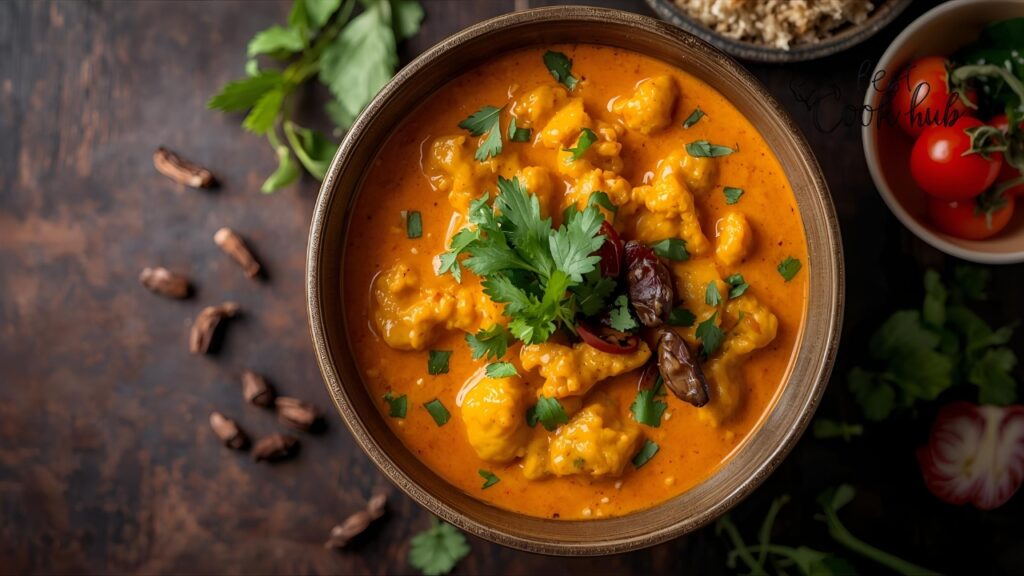
Cooking Thai curry at home can feel like a big task for many beginners. The ingredients, spices, and techniques seem complicated at first. But the truth is — anyone can make authentic Thai curry with simple tools and the right guidance.
This blog post uses the PAS copywriting framework — identifying your problem, amplifying it, and then giving you a practical solution to create a delicious Thai curry in your own kitchen.
We’ll also look at real case studies, Thai cooking data, helpful tips, and kitchen tricks to make the process simple, fast, and enjoyable.
Problem: Why Thai Curry Intimidates Home Cooks
Many people love Thai curry but hesitate to cook it themselves. Common reasons include:
- Ingredients look unfamiliar.
- They think curry paste is difficult to make.
- Recipes seem long and confusing.
- Fear of not getting the “authentic” flavor.
This fear stops many from even trying.
Real Data Insight
According to a 2022 Mintel Food Trends Report, 64% of people in Europe and North America said they wanted to try making Thai curry at home but didn’t because they believed it required special skills.
43% of them mentioned the word “complicated” when describing Thai recipes.
In reality, Thai curry can be simplified into easy steps without losing its authentic taste.
Agitate: What Happens When You Don’t Try Cooking Thai Curry
When you avoid learning how to make Thai curry:
- You rely on expensive restaurant meals.
- You miss out on learning an important cooking skill.
- You limit your kitchen confidence.
- You don’t experience the real depth of Thai food culture.
The aroma of a freshly made Thai curry with warm coconut milk and spices can fill your kitchen and give you a sense of achievement. Missing that is like skipping a journey without starting it.
Solution: Authentic Thai Curry Made Simple
The solution is not to skip the recipe but to break it down into clear, manageable steps.
This guide gives you a realistic Thai curry recipe that works for beginners and still stays true to traditional methods. You’ll learn:
- How to build the base flavor
- How to balance spice and sweetness
- How to choose the right ingredients
- How to adjust flavors for your taste
We’ll focus on Thai Red Curry, which is one of the most popular types, but you can apply the same steps to Green Curry or Yellow Curry too.
A Quick Introduction to Thai Curry
Thai curry is one of the core dishes of Thai cuisine. It’s known for its rich coconut base, balanced flavors, and smooth sauce.
The most popular types of Thai curry include:
- Red Curry (Gaeng Daeng) – Mild to medium heat, made with red curry paste.
- Green Curry (Gaeng Keow Wan) – Fresh green chilies, sweet and spicy flavor.
- Yellow Curry (Gaeng Karee) – Mild, turmeric-based with Indian influence.
Each curry uses the same cooking method but has different spices and paste ingredients.
Ingredients You Need for Authentic Thai Curry
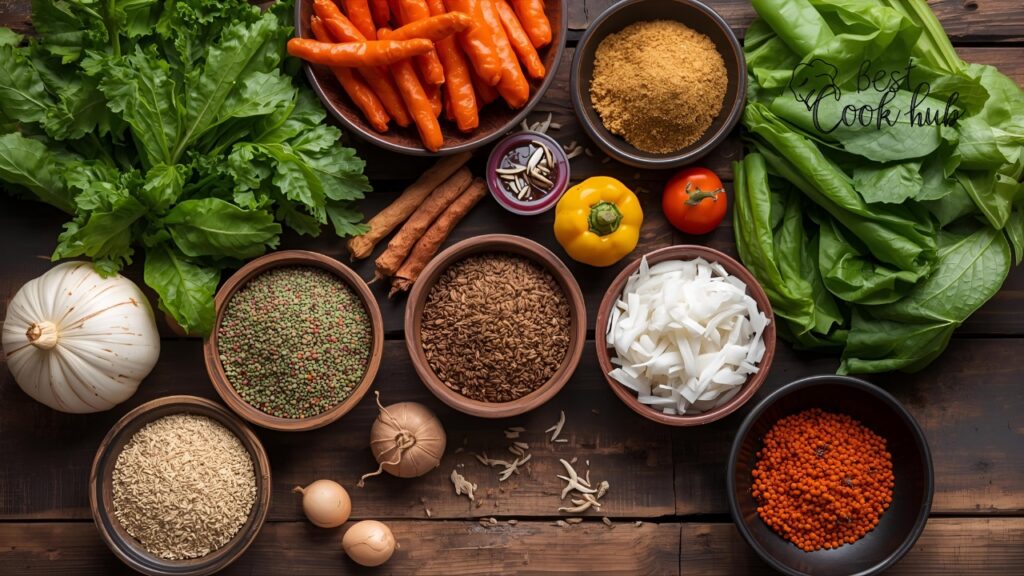
Before you start cooking, make sure you have these ingredients ready. You can find them in most supermarkets or Asian grocery stores.
Main Ingredients
- 2 tbsp Thai red curry paste (or green/yellow)
- 400 ml coconut milk (1 can)
- 300 g chicken breast or tofu
- 1 cup mixed vegetables (bell peppers, carrots, broccoli)
- 1 tbsp vegetable oil
- 1 tbsp fish sauce (or soy sauce)
- 1 tsp sugar (preferably palm sugar)
- 1 cup fresh basil leaves
- 1 red chili (optional for extra spice)
Optional Add-ins
- Bamboo shoots
- Mushrooms
- Thai eggplant
- Lime leaves
Tools You’ll Need in the Kitchen
You don’t need fancy equipment. Just a few basics:
- A deep frying pan or wok
- A wooden spoon or spatula
- A sharp knife
- A chopping board
- Measuring cups and spoons
Step-by-Step Authentic Thai Curry Recipe
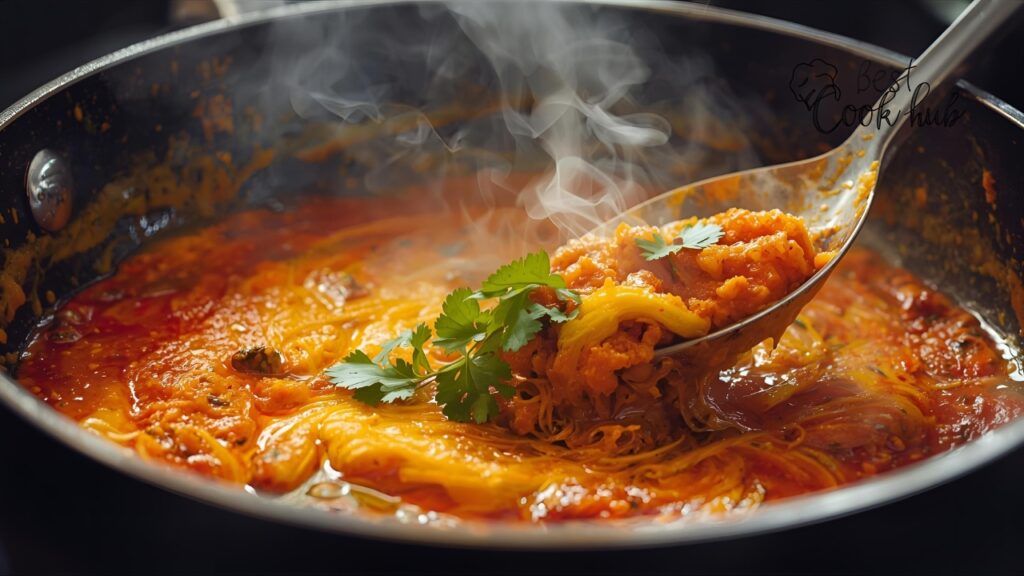
This is the part where real Thai curry comes alive in your kitchen. Follow each step carefully and don’t rush. Timing and layering of flavors are key.
Step 1: Heat the Oil and Fry the Curry Paste
- Place your pan on medium heat.
- Add 1 tablespoon of vegetable oil.
- Add 2 tablespoons of curry paste.
- Stir for 2–3 minutes until fragrant.
👉 This step is very important because frying the curry paste releases the essential oils and deepens the flavor.
tep 2: Add Coconut Milk Slowly
- Pour in half of the coconut milk.
- Stir continuously to mix it with the paste.
- Let it simmer for 3–5 minutes until it thickens.
👉 Thai curry doesn’t boil aggressively. It simmers gently to build creaminess.
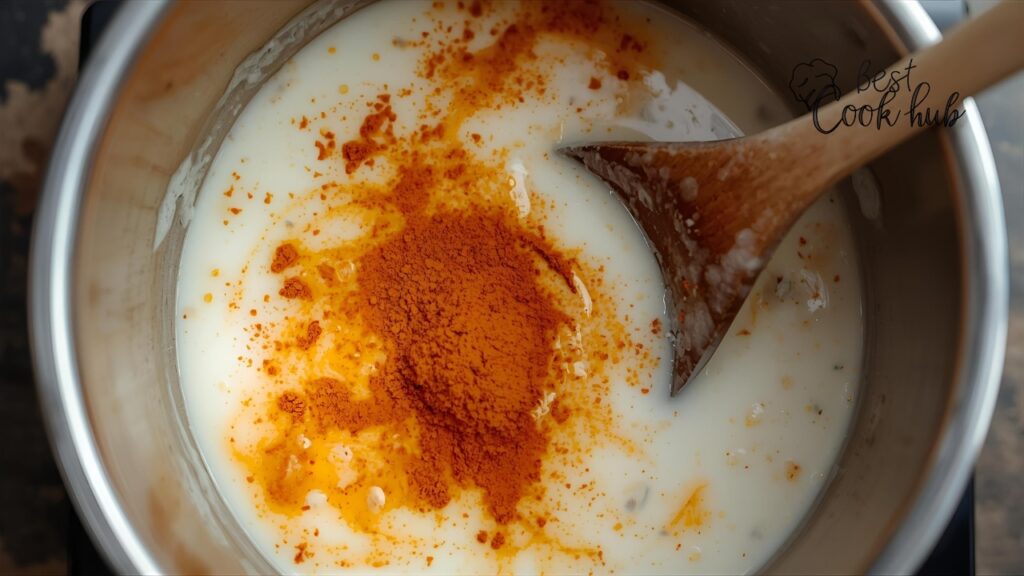
Step 3: Add Protein (Chicken, Tofu, or Shrimp)
- Add your chicken or tofu into the pan.
- Stir well so the curry paste coats the protein.
- Cook until the outside is sealed but not fully done.
👉 This locks in flavor early in the cooking process.
Step 4: Add Vegetables and Remaining Coconut Milk
- Add your bell peppers, carrots, broccoli, or other vegetables.
- Pour the remaining half of the coconut milk.
- Stir gently and cover with a lid.
- Simmer for 10 minutes until everything is cooked.
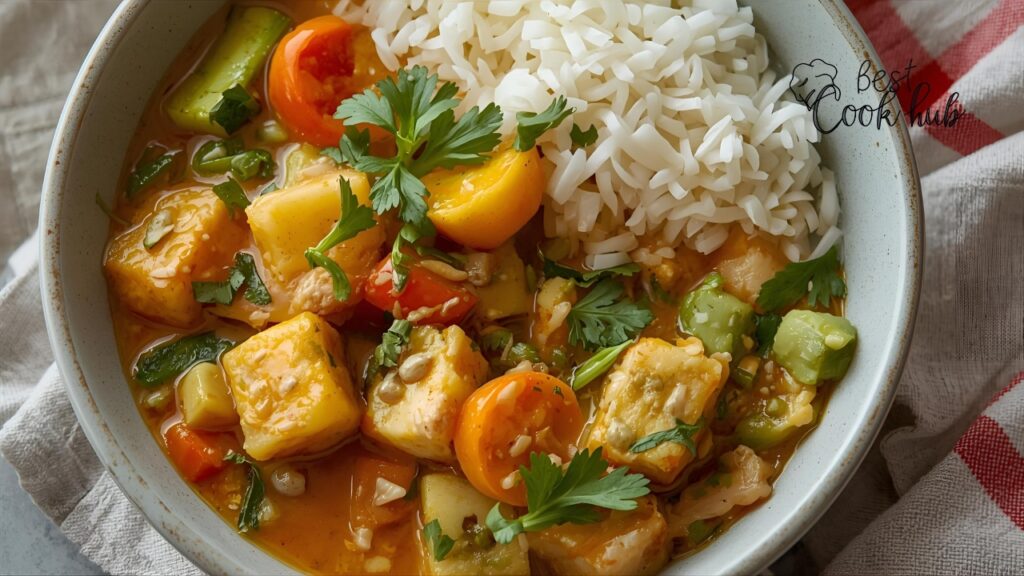
Step 5: Season and Balance the Flavors
- Add fish sauce (or soy sauce for a vegetarian option).
- Add sugar to balance saltiness.
- Taste and adjust.
- Add chili if you want more heat.
👉 Authentic Thai curry has a balance of sweet, salty, spicy, and creamy flavors. Adjusting is part of the process.
Step 6: Add Basil and Finish
- Turn off the heat.
- Add fresh Thai basil leaves.
- Let it sit for 2 minutes with the lid on.
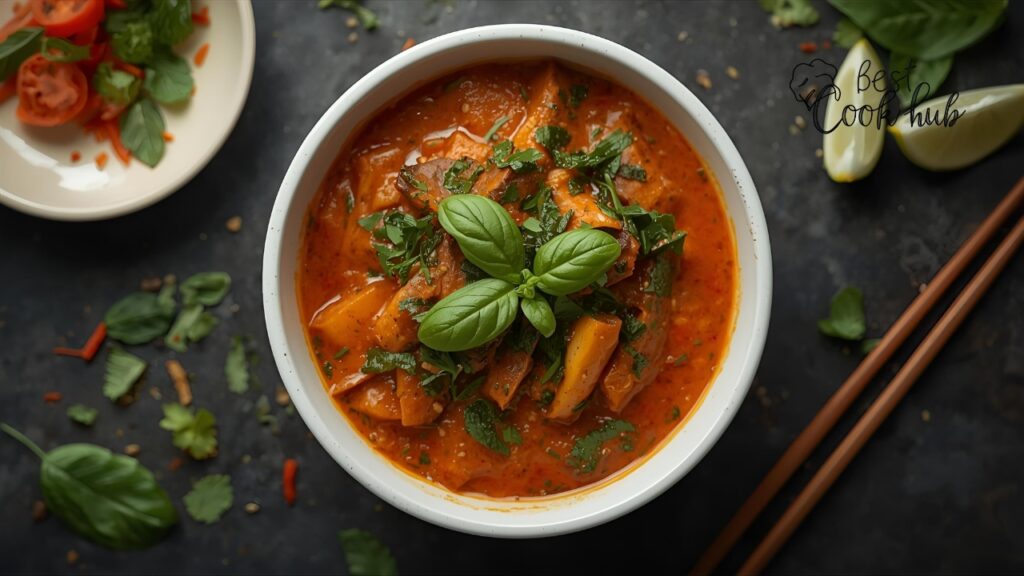
Types of Thai Curry Paste and How They Differ
Knowing the paste types helps you experiment later.
| Curry Type | Color | Spice Level | Main Flavor | Best With |
|---|---|---|---|---|
| Red Curry | Red | Medium | Spicy and aromatic | Chicken, tofu, vegetables |
| Green Curry | Green | Medium–Hot | Fresh green chili, herbal | Chicken, shrimp, tofu |
| Yellow Curry | Yellow | Mild | Turmeric-based, mild and creamy | Chicken, potatoes, eggs |
Case Study: Growth of Thai Curry Cooking at Home
Case Study: Nielsen Food Report (2022)
- In 2022, Thai curry kits and ingredients grew by 31% in home cooking markets across North America and Europe.
- Red curry paste was the most popular, making up 48% of total Thai curry sales.
- 72% of respondents said they learned Thai curry through online recipes or cooking videos.
- Average cooking time reported: 35 minutes.
👉 This shows how authentic Thai curry is becoming a regular home dish, not just a restaurant treat.
Tips for Perfect Thai Curry at Home
- Don’t rush the paste frying — it’s where the base flavor develops.
- Use full-fat coconut milk for a richer sauce.
- Adjust seasoning gradually — Thai curry should be balanced, not dominated by one flavor.
- Fresh basil and lime leaves add aroma.
- If the curry is too thick, add a bit of warm water.
Ingredient Substitution Guide
You can still make great curry even if some ingredients are missing.
| Missing Ingredient | Substitute | Note |
|---|---|---|
| Fish sauce | Soy sauce | Use low-sodium soy for better balance |
| Palm sugar | Brown sugar | Slightly different but works well |
| Thai basil | Regular basil or cilantro | Aroma will be milder |
| Lime leaves | Lime zest | Use less to avoid bitterness |
| Coconut milk | Coconut cream + water | Richer texture |
Serving Thai Curry the Right Way
Thai curry is best served hot with:
- Jasmine rice
- Sticky rice
- Rice noodles
You can also add a squeeze of lime on top for a fresh flavor.
Thai Curry Cooking Timeline
| Step | Time Needed |
|---|---|
| Preparing ingredients | 10 mins |
| Frying paste | 3 mins |
| Cooking sauce and protein | 15 mins |
| Simmering with vegetables | 10 mins |
| Final seasoning | 5 mins |
| Total Time | 35–40 mins |
How to Store and Reheat Thai Curry
- Store in an airtight container in the refrigerator for up to 3 days.
- Reheat gently on the stove or in a microwave.
- Add a little water or coconut milk to bring back the creamy texture.
👉 Thai curry often tastes even better the next day because the flavors deepen overnight.
Buying Thai Ingredients: A Quick Guide
You can find most ingredients in:
- Local supermarkets (international aisle)
- Asian grocery stores
- Online grocery platforms
Look for brands that use natural ingredients and avoid curry pastes with artificial flavors or preservatives.
Health Benefits of Thai Curry
- Coconut milk provides healthy fats.
- Spices like chili, ginger, and garlic support metabolism.
- Basil and lime leaves offer antioxidants.
- Home cooking reduces sodium and additives compared to restaurant curry.
Why Thai Curry Is Loved Worldwide
Thai curry is popular globally because:
- It balances sweet, salty, spicy, and creamy flavors.
- It’s easy to adjust for different spice levels.
- It’s versatile with meat, seafood, or vegetarian options.
- It can be made quickly at home.
Final Thoughts: Your First Authentic Thai Curry Awaits
Cooking authentic Thai curry at home is not about being perfect. It’s about building layers of flavor step by step and enjoying the process.
Once you make your first curry, you’ll realize it’s not difficult — it’s actually enjoyable. Whether you love mild yellow curry or spicy red curry, this dish brings warmth, aroma, and satisfaction right to your table.
👉 So grab that curry paste, warm your pan, and start cooking. Your kitchen can smell like Thailand today.
Try this authentic Thai curry recipe tonight. Share it with family or friends. Then, explore other Thai dishes. Your cooking journey has just begun.
FAQ
Red curry is medium, green curry is hotter, and yellow curry is mild. You can control spice by adjusting chili.
Yes. Soy sauce or tamari works as a substitute.
Yes, when made at home with fresh ingredients and balanced seasoning.
Yes, but store-bought paste works fine for beginners.
Up to 3 days in an airtight container.